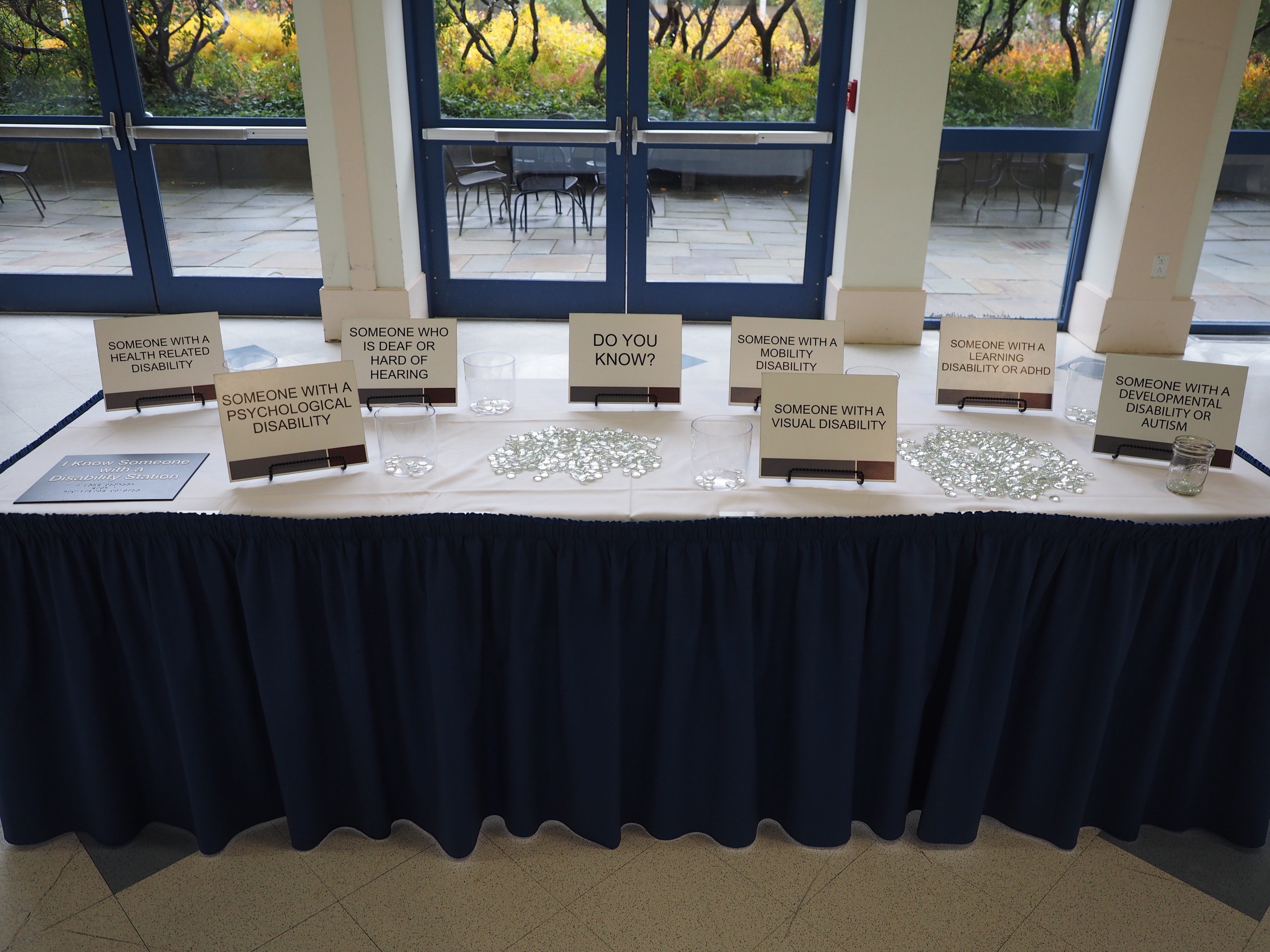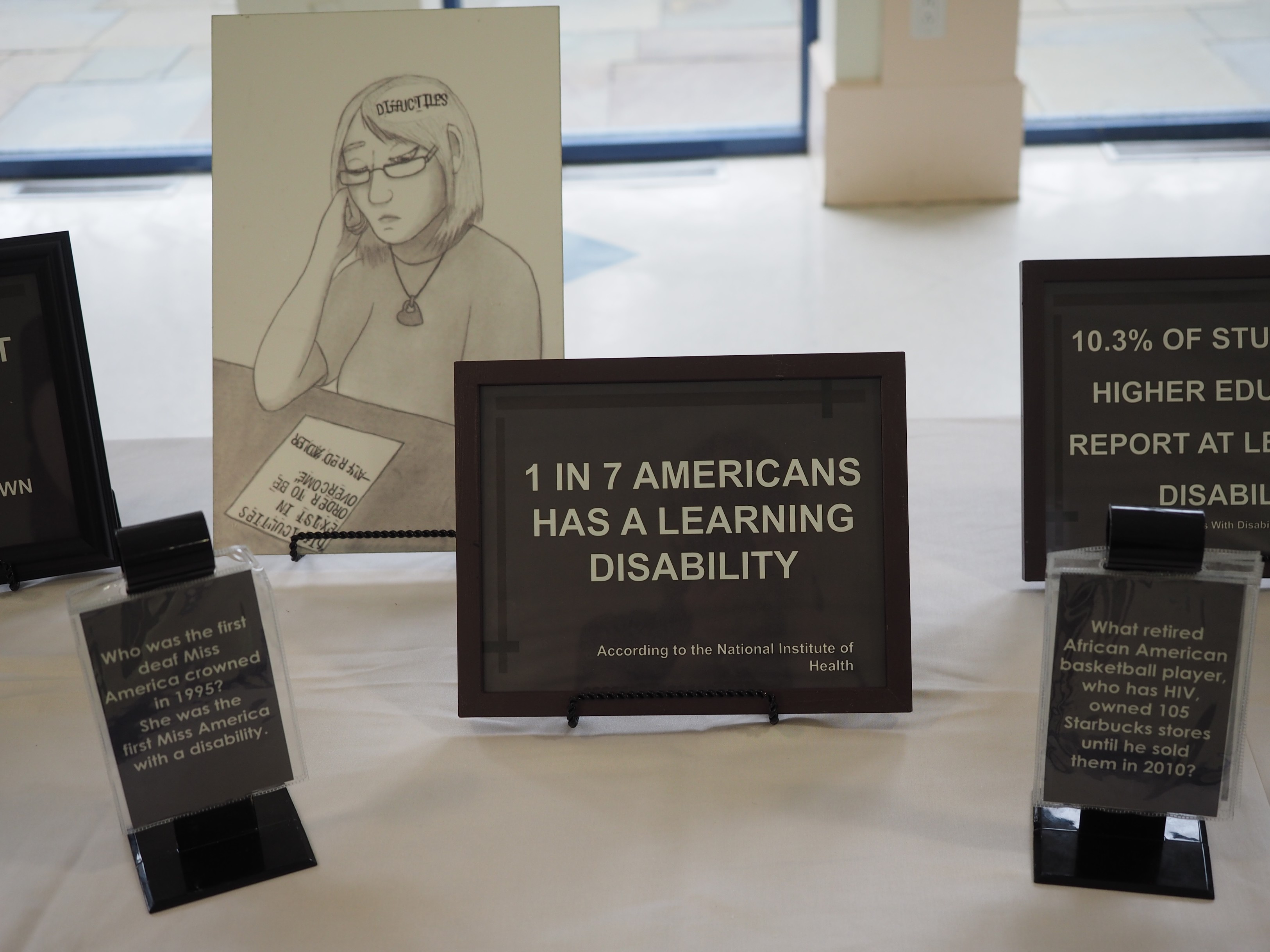“There’s so much talk in this country right now of accessibility and disability rights,” said Julia Kaback ’18, who is an ally of the Student Accessibility Services office, which oversaw “The Ability Exhibit” in the 1962 room last Wednesday.
“This exhibit hopes to promote [the] idea that disability doesn’t just mean wheelchair, it means you can do anything if you put your mind to it… Conn has allowed me to see that, and own my learning challenges,” said Kaback, who has a learning disability.
“Allies for Inclusion: The Ability Exhibit” is a traveling exhibit that goes to different colleges in order to promote ability awareness and inclusion. This was the first time that it has been in Connecticut. It represents all disabilities through videos, displays, and interactive learning opportunities.
“Disability,” as defined in the Americans with Disabilities Act of 1990, is “a physical or mental impairment that substantially limits a major life activity.” This could include thinking, breathing, or concentrating.
Kaback, although identifying as disabled, believes that she simply learns a different way. “But when you go into the nitty gritty, people always say, ‘Hey you, you’re disabled,’ but that upsets me.”
Alyssa Paquin, the Learning and Accommodation Specialist for the ARC and Student Accessibility Services at Conn, also wants students to know that a disability “is just a difference, and not an abnormal thing.”
All of the stops in the exhibit demonstrated this idea. There were towering, standing posters providing definitions and statistics (40% of first-year college students in the U.S. cited having a learning disability in 2000), and tables covered with interactive learning opportunities. On one table, a participant could place a glass bead in a jar representing a certain disability if they know someone who has it. On another were gadgets and items specifically invented for disabled people, including an adjustable, hinged keyboard and computer mice for those who have difficulty with vision or fine-tuned motor movements.

One of the round tables in the center of the 1962 room had three laptops with PowerPoints on famous people with disabilities. “What is their common bond?” read the title at the top of one slide. Below were pictures of David Beckham, Cameron Diaz, and Donald Trump. They all have obsessive compulsive disorder, or OCD.
At the very end of the room, participants could fill out a card, pledging to be an ally for inclusion. One can become this by educating oneself on issues relevant to the disability community, listening to and respecting those with disabilities, and advocating for inclusive changes on one’s college campus.
There were also four continuously running videos set up along the perimeter of the room. One featured Aimee Mullins, an athlete and fashion model with prosthetic legs, giving a TED talk on the abilities of the disabled. Another showed college students with disabilities discussing accommodations in college.
“I’d like students to know that this is a topic that should be addressed on this campus,” continued Kaback in a personal interview. “A lot of people know I wrote an article [in The College Voice] about this last year about making our buildings more accessible.” In her opinion, the current construction of Global Commons in Blaustein is great since it means that the College is investing in the languages. However, “we should be investing more into student well-being, and that means making our buildings more accessible, and giving the College a more diverse reputation that doesn’t just mean black and white.”
In her article published last October, Kaback explored the “state of accessibility services” at Connecticut College. She revealed how the College’s plan “Building on Strength” aims to have a more diverse and just campus, and how improving campus accessibility is therefore part of its agenda. However, finance impedes this progress and changes are slow to come. According to her article, only five academic buildings are “fully accessible” on campus. This could mean that some buildings lack electronic door openers, have steps without railings, or are without “curb cuts” (places where the sidewalk slopes into the road). Therefore, students with disabilities lack easy access to these buildings. In this way, certain students are not being represented and addressed on campus.
Paquin wants to remind Conn students that “they probably know someone with a disability, but don’t know it.” One should not feel afraid or be uncomfortable around those with disabilities, especially since no one is normal.
If anyone wants more information or has questions, the Students of Accessibilities Services office is located in the ARC in Shain library. The College community should also be on the lookout for more related programming this winter.









